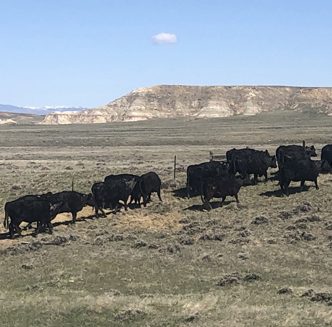Super Bowl LIX: Ag industry plays a vital role in the biggest game of the season
The National Football League’s (NFL) season will culminate in the biggest game of the year this Sunday when the Kansas City Chiefs take on the Philadelphia Eagles at Caesars Superdome in New Orleans.
While agriculture may be far from top of mind come game day, it is hard to ignore the industry’s importance in one of America’s most celebrated days of the year.
From the football tossed around on the field to the food consumed by fans across the nation, agriculture is everywhere on Super Bowl Sunday.
Food facts
According to the National Retail Federation, 113.7 million people plan to throw or attend a Super Bowl party, while another 17.6 million plan to watch the game at a bar or restaurant. Total spending is estimated to reach a record-breaking $18.6 billion or $91.58 per person.
While some of these expenditures are expected to go toward team apparel, new TVs and party decorations, a whopping 81 percent will be spent on food and beverages, courtesy of the nation’s hardworking farmers and ranchers.
In fact, Super Bowl Sunday has climbed to the second largest day of food consumption in the U.S. behind Thanksgiving – and therefore the second most popular day to order take out.
Restaurantware.com, an online foodservice retailer and manufacturer, estimates one in seven Americans – or 48 million people – order take out for the big game, 60 percent of which is pizza.
“A standard pizza is a bonanza for agriculture,” says Ohio State University Agriculture and Natural Resources Educator Ed Lentz in The Courier. “Tomato sauce requires about eight to 10 medium-sized tomatoes and about one cup of cheese. It is estimated about 12.5 million pizzas are ordered during the Super Bowl, which would require 125 million tomatoes and 7.8 million pounds of cheese.”
Lentz further notes it takes approximately two cups of wheat flour to make the dough of one large pizza, and since one bushel of wheat makes about 42 pounds of flour, the 12.5 million pizzas consumed on Super Bowl Sunday would require nearly 23,000 bushels of wheat.
All of this doesn’t take into account popular pizza toppings, including chicken, pork, beef, pepperoni, mushrooms, olives, peppers, onions, anchovies, pineapple, etc.
Chicken wings’ place in popular culture began with restaurants and bars catering to sports fans, and since then, the tasty finger food has joined pizza as one of the top three favorites to consume on Super Bowl Sunday.
According to the National Chicken Council, an estimated 1.45 billion chicken wings will be eaten during the big game, which is enough – when laid end to end – to circle Earth three times.
In a Jan. 31 AgriLife Today article, Dr. David Anderson, Texas A&M AgriLife Extension economist in the Department of Agricultural Economics, notes, “Wings were a poultry cut that used to be practically worthless. Then someone tossed them in some buffalo sauce and dipped them in blue cheese and ranch dressing. Now, restaurants across the country want to capitalize on this popularity.”
Although recent outbreaks of highly pathogenic avian influenza have significantly impacted laying hens, Anderson points out it has little to do with broilers for meat production. However, chicken wings’ peak in popularity around Super Bowl weekend are still likely to result in higher prices at the restaurant or grocery store.
This year, Anderson believes football fans can expect to pay slightly more per pound for chicken wings than they did last year, with wholesale prices ringing in around $1.91 per pound, up 8.3 percent from the same time last year.
Chicken wings, however, are not the only source of protein Americans will consume on game day. It is estimated 10 percent of Americans will fire up their grill – the second highest number on any given day besides the Fourth of July.
Popular eats include hot dogs, bratwurst, steak and grilled vegetables, and experts estimate a massive 14 billion hamburgers are served on Super Bowl Sunday, as well as 12 million pounds of bacon.
Snacks and drinks
Chips and dip round out the top three Super Bowl favorites, with Americans consuming 11.2 million pounds of potato chips, 8.2 million pounds of tortilla chips and four million pounds of pretzels during the big game.
This equates to roughly 45 million pounds of potatoes and 69.7 million pounds of corn.
Guacamole has risen to the top as the dip of choice for many football fans, with over eight million pounds consumed and nearly 139.4 million pounds of avocados purchased ahead of the Super Bowl, which is enough to fill a football field 50 feet high from end zone to end zone.
Popcorn and nuts are other popular game day snacks, and experts estimate 3.8 million pounds of popcorn and 2.5 million pounds of nuts are eaten during the big game.
Football fans require something refreshing to wash down all of these salty snacks, and the National Restaurant Association notes 51.7 million cases of beer – roughly 325.5 million gallons – are sold every year during Super Bowl weekend. This is enough liquid to fill 2,000 Olympic-sized pools.
Experts also estimate Americans will spend around $2.37 million on soda.
On the field
Traces of agriculture can also be found on the field itself.
Although Caesars Superdome boasts one of the largest continuous synthetic turf systems in the NFL, both Super Bowl LIX teams play on natural turf during their home games.
According to Sports Illustrated, the Philadelphia Eagles’ Lincoln Financial Field utilizes a hybrid grass and turf playing field, made with a Desso GrassMaster system, which combines artificial fibers with natural grass.
The Kansas City Chiefs’ Arrowhead Stadium is a completely natural grass field that uses NorthBridge bermudagrass, a species known for its dense growth and cold tolerance.
Although football uniforms have evolved over time to the sophisticated, technology-infused gear worn today, the earliest jerseys were made of wool and helmets were made of soft leather.
Leather is still used to make the football, and although they are often referred to as “pigskins,” footballs are actually made of cowhide.
According to Wilson, the official supplier of NFL footballs, 120 different footballs will be used in Sunday’s game, requiring 12 cowhides – usually sourced from Iowa, Kansas or Nebraska – as one cowhide can make 10 footballs.
Hannah Bugas is the managing editor of the Wyoming Livestock Roundup. Send comments on this article to roundup@wylr.net.





